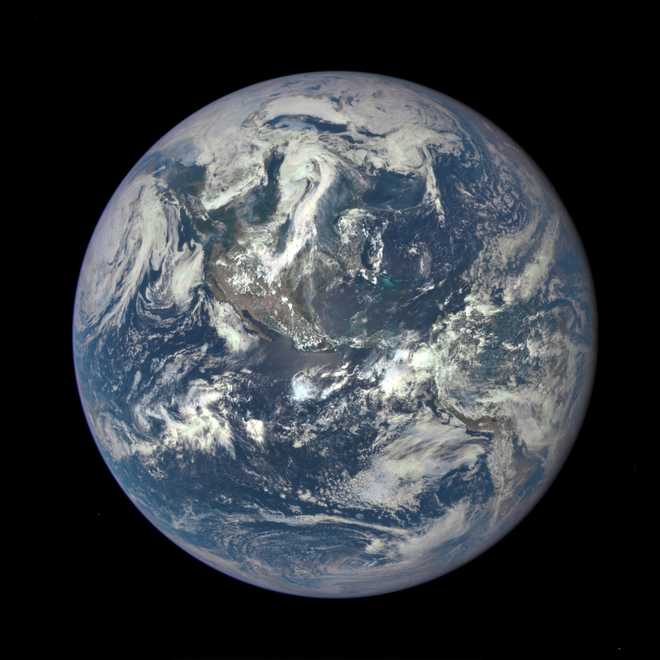
This colour image of Earth, taken by NASA’s Earth Polychromatic Imaging Camera (EPIC), a four megapixel CCD camera and telescope on July 6, 2015, and released on July 20, 2015. Reuters/NASA
Washington
NASA has captured the first image of
the sunlit side of Earth from a distance of 1.6 million km, which prompted US
President Barack Obama to tweet about the need to protect the “only planet we
have”.
The colour images of Earth from
NASA’s Earth Polychromatic Imaging Camera (EPIC) on the Deep Space Climate
Observatory (DSCOVR) satellite are generated by combining three separate images
to create a photographic-quality image.
The image clicked on July 6 clearly
shows desert sand structures, river systems and complex cloud patterns, NASA
said.
“Just got this new blue marble photo
from @NASA. A beautiful reminder that we need to protect the only planet we
have,” Obama tweeted on his official account @POTUS.
The camera takes a series of 10
images using different narrowband filters — from ultraviolet to near infrared.
“This first DSCOVR image of our
planet demonstrates the unique and important benefits of Earth observation from
space,” said NASA Administrator Charles Bolden.
“DSCOVR’s observations of Earth, as
well as its measurements and early warnings of space weather events caused by
the Sun, will help every person to monitor the ever-changing Earth, and to
understand how our planet fits into its neighbourhood in the solar system,”
said Bolden.
These initial Earth images show the
effects of sunlight scattered by air molecules, giving the images a
characteristic bluish tint.
The EPIC team now is working on a
rendering of these images that emphasises land features and removes this
atmospheric effect.
Once the instrument begins regular
data acquisition, new images will be available every day, 12 to 36 hours after
they are acquired by EPIC. These images will be posted to a dedicated web page
by September.
“The high quality of the EPIC images
exceeded all of our expectations in resolution,” said Adam Szabo, DSCOVR
project scientist at NASA's Goddard Space Flight Centre in Greenbelt, Maryland.
The satellite was launched in
February and recently reached its planned orbit at the first Lagrange point or
L1, about 1 million miles from Earth towards the Sun.
It's from that unique vantage point
that the EPIC instrument is acquiring science quality images of the entire
sunlit face of Earth.
Data from EPIC will be used to measure
ozone and aerosol levels in Earth's atmosphere, cloud height, vegetation
properties and the ultraviolet reflectivity of Earth.
NASA will
use this data for a number of Earth science applications, including dust and
volcanic ash maps of the entire planet. — PTI